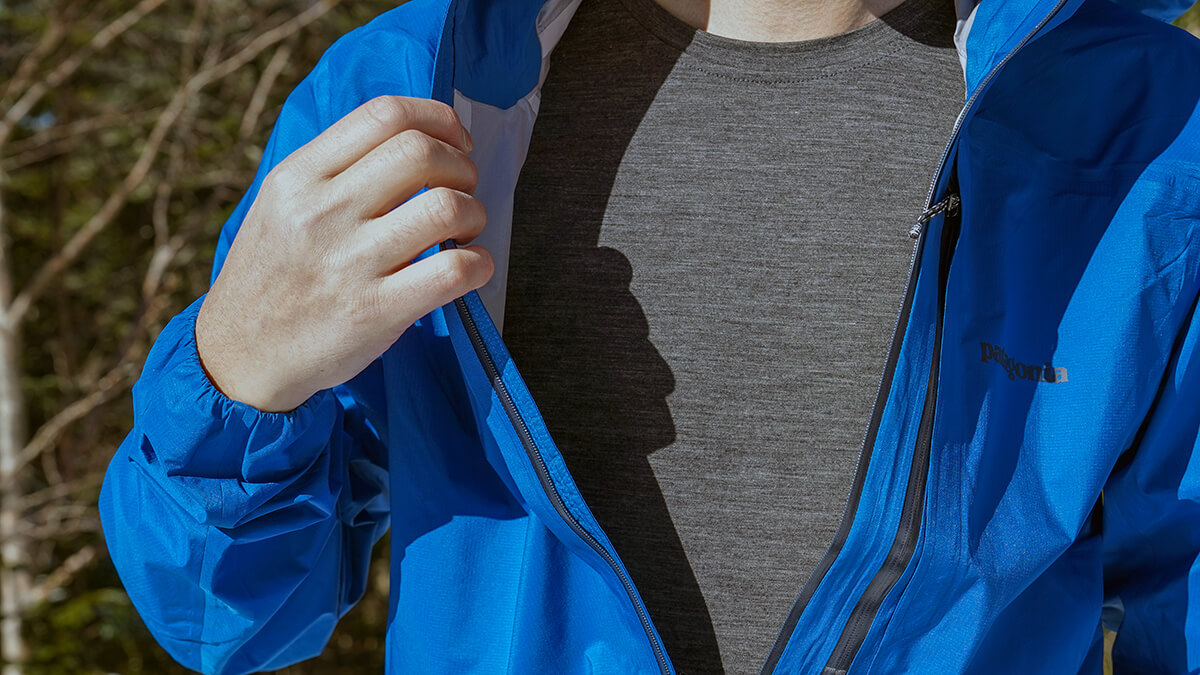
[Fall/Winter 2025] Recommended base layers for this season and purpose, selected after comparing over 200 items, and how to choose the perfect one for you
As the weather finally starts to get chilly, layering becomes more and more important, and the key to this season is the base layer, which is the core of the layering system.
When hiking, where the environment changes drastically depending on the weather and the amount of exercise, it is no exaggeration to say that the base layer, which is the "first layer" that comes into direct contact with the skin, is the most important piece that directly affects your comfort while you are out and about.
The functions required for the base layer differ depending on the purpose, so select the best buy by category.
The basic role of a base layer is to maintain a constant, comfortable temperature and humidity level on the skin. A good base layer wards off heat and cold and efficiently wicks away sweat from the skin. Furthermore, new models featuring various features, such as materials and designs, appear and disappear every year to suit different seasons and purposes, from light hikes in spring and fall to midsummer runs, winter mountain climbing, and even everyday wear. Trends come and go with the times, and the market is flooded with similar (but not necessarily bad) products that overshadow a select few truly innovative and practical models for outdoor enthusiasts. I've worn over 100 base layers, at least, but I've made countless mistakes by choosing one based on its feel. With so many options available today, finding the best base layer for you can be a challenge.
So Outdoor Gearzine has compiled a list of 225 base layers (as of Fall/Winter 2025) from specialist outdoor manufacturers on the market, and from there, we've considered this season's best buys for different purposes. We've divided the list into eight categories based on use and purpose, and selected the best from each to introduce models that best suit our readers' needs. In the second half of the article, we'll also explain, based on our past experience, the checkpoints that first-time base layer buyers should consider when choosing the best model for them.
Please note that while we are only introducing one or two items in each category here, the other best candidates and a comparison table of all 225 items including them are available to members. Outdoor Gearzine's content is supported by your support. If you are interested, please consider becoming a member!
You can read all our recommended base layers and a comparison list of all 225 models in our paid membership article.
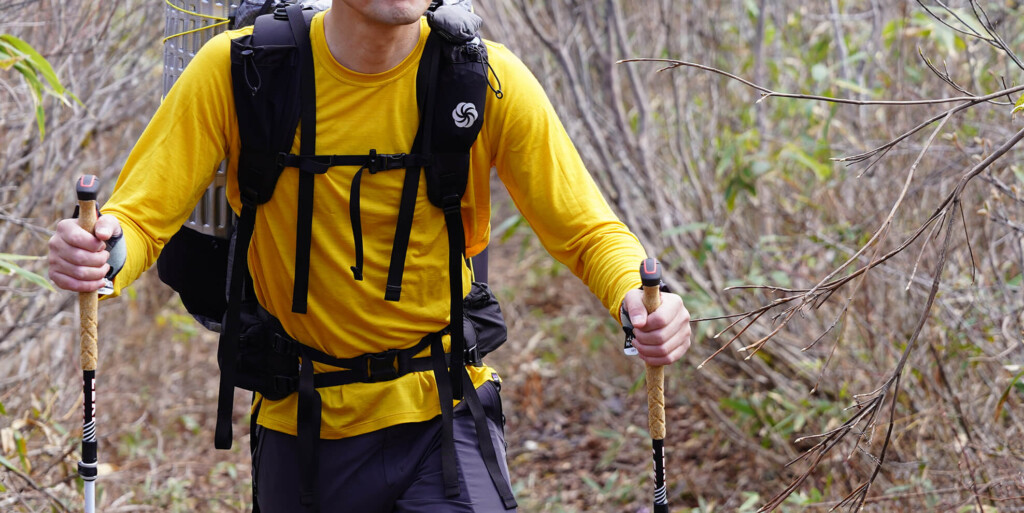
table of contents
- Recommended base layers for different scenes and uses
- Best All-Round: ibex WOOLIES PRO TECH Q-ZIP
- Vest/Hiking Category: [Spring/Summer] SmartWool Active Ultralight Long Sleeve / [Fall/Winter] STATIC FRENZY Long Sleeve Shirt
- Best Activewear Category: [Spring/Summer] NORRONA Senja Equaliser Lightweight Long Sleeve / [Autumn/Winter] THE NORTH FACE Expedition Dry Dot Crew
- Best Value: [Spring/Summer] Mountain Hardwear Estero Long Sleeve Zip T-Shirt / [Fall/Winter] Rab Syncrino Base LS Tee
- Best Versatility: HERENESS SMOOTH WOOL T-SHIRT LONG SLEEVE 2
- Match your base layer to the season and activity
- How to Choose the Right Base Layer: 5 Tips for Choosing the Right Base Layer
- Introduction: The basics of layering and the role of the base layer
- Point 1: Materials - Learn the difference between synthetic fiber and merino wool
- Point 2: Thickness of the fabric - Choose according to season and activity
- Point 3: Shape, knitting, sewing - Choose a design that suits your purpose and make it even more comfortable
- Point 4: Comfort and fit - The basic silhouette is tightly attached to the skin
- Point 5: Other detailed functions and features - Keep the functions found in higher quality and high-performance models -
- Summary: Assuming you use it according to the situation
Recommended base layers for different scenes and uses
Best All-Round: ibex WOOLIES PRO TECH Q-ZIP
First of all, it's a highly balanced and excellent base layer that can be worn all year round, from mountaineering and hiking to climbing, trail running, ski mountaineering, fishing, and biking. If someone asks me, "What base layer do you recommend?", this is the first thing I think of.
This season's king of this category is the " ibex WOOLIES PRO TECH ." Its superior material, cut, stitching, and thickness all contribute to its perfect balance for year-round wear. Most notably, it uses the innovative "NUYARN" fiber, which, thanks to its unique spinning structure, maintains the traditional properties of wool while improving its lightness, quick-drying properties, warmth, breathability, stretch, and strength . When you try it on, you'll be amazed at how comfortable it is for active winter activities—its fluffy lightness, stretch for ease of movement, and quick-drying properties when you sweat. While there are countless wool-synthetic blends on the market, NUYARN is the only one I've seen that elevates the power of wool to such a high level . In addition to the material, the pattern and stitching are also of exceptional quality, making this a truly exceptional base layer. It remains my favorite to date and continues to be a favorite.
Related Articles
Another noteworthy material that similarly compensates for wool's weaknesses without losing its appeal NIKKE AXIO® . This yarn was developed by Nikke Textiles, based in Bishu, Japan's largest woolen textile (wool) producing region. It's a new twisted yarn in which a spiral filament (polyester fiber) is wrapped inside the wool fiber bundles. Unlike traditional wool-polyester twisted yarns, the polyester fiber does not appear on the surface of the yarn, so it retains the feel and texture of wool while improving quick-drying properties, stretch, and durability. This season, several base layers using this material have been released, and it has gained attention from me as a useful all-around model.
Vest/Hiking Category: [Spring/Summer] SmartWool Active Ultralight Long Sleeve / [Fall/Winter] STATIC FRENZY Long Sleeve Shirt
In the Mountaineering and Hiking category, we have selected the best models that basically have the same well-balanced all-around features as the All-Round category, but which place a little more emphasis on "comfort" that will keep you comfortable throughout the day, including relaxing moments like lounging in a tent.
This season's new " Active Ultra Light Long Sleeve" SmartWool , one of the leading brands of merino wool products, is made with a blend of wool, which has temperature-regulating, moisture-regulating, and odor-resistant properties, and Tencel™ Lyocell fiber, which is environmentally friendly and has an excellent cooling effect that prevents the body from getting too cold even when sweat evaporates. Neither 100% merino wool nor synthetic fibers offer a refreshing feel even in the summer. The careful construction, with skillful cutting for a comfortable fit and flatlock seams to reduce bulk, makes this a garment you can't go wrong with.
Meanwhile, for autumn and winter, we recommend the "STATIC FRENZY L/S SHIRTS," which uses a special knitting method to create a two-layer structure with wool on the inside that touches the skin and polyester on the outside, allowing for the warmth of wool while still being comfortable to wear, making it suitable for activities that involve sweating.An feature is that you can customize the balance by wearing it inside out depending on the situation, such as by increasing its sweat-management function.
Best Activewear Category: [Spring/Summer] NORRONA Senja Equaliser Lightweight Long Sleeve / [Autumn/Winter] THE NORTH FACE Expedition Dry Dot Crew
In this category, we will select vests that prioritize comfort for active scenes, such as trail running, fastpacking, and ski touring, which are activities that cause a lot of sweating in a short amount of time, by preventing body heat from building up, efficiently expelling sweat, and maintaining a constant temperature and humidity level so as not to cool the body too much. The key points here will be breathability , sweat absorption , quick-drying , three-dimensional contact with the skin , light weight , ease of movement , odor resistance , moderate heat retention (autumn/winter) , UV resistance .
Each brand has a different approach and preferences are different, so it's hard to say which is best, but personally for the past few years, my go-to for spring and summer the NORRONA senja equaliser lightweight long sleeve , and for autumn and winter, the THE NORTH FACE Expedition Dry Dot Crew .
The spring/summer vest, the NORRONA Senja Equaliser Lightweight Long Sleeve , is made primarily from the moisture-wicking, quick-drying material "Teijin Deltapeak," which has been a hot topic in some circles. It's a high-tech fabric that combines incredible lightness and stretch, a smooth and soft texture, high abrasion resistance, excellent quick-drying properties, and UV protection. It dries quickly no matter how wet it gets with sweat or water, and is durable enough to withstand hard use without tearing, making it an essential piece of clothing for the past few spring and summer. While originally designed for trail running, it's advertised as being suitable for any activity requiring softness, light weight, moisture-wicking properties, and quick-drying properties, and I've found it suitable for hiking, stream climbing, and fishing without any issues.
On the other hand, many people may already know about the autumn/winter vest " THE NORTH FACE Expedition Dry Dot Crew ," which has been highly praised for several years, including on this site, but even this year, it seems that no model has yet come out that surpasses it.
Future Dot Fleece uses innovative technology to quickly remove large amounts of sweat from the skin and efficiently evaporate it to the outside, providing amazing comfort during intense activities in cold weather. What's great about this piece is that it's not just quick-drying, but it also keeps the discomfort of sweat off the skin, keeping it dry and comfortable even while it's drying.
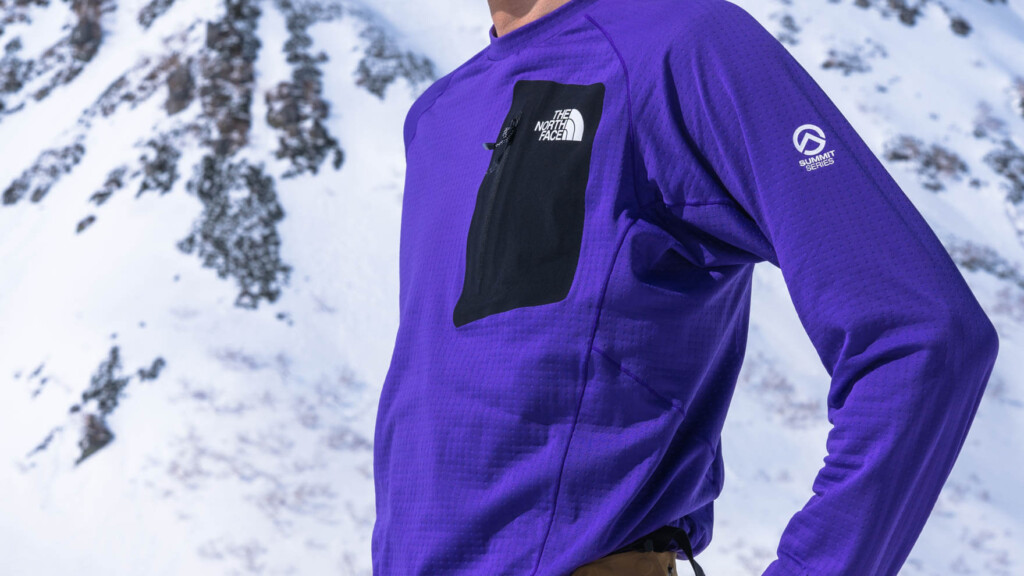
Related Articles
Best Value: [Spring/Summer] Mountain Hardwear Estero Long Sleeve Zip T-Shirt / [Fall/Winter] Rab Syncrino Base LS Tee
We've picked out models that offer performance comparable to top-class models at a price of around 10,000 yen or less. Incidentally, design and comfort have not been taken into consideration. The synthetic fiber category is primarily intended for spring and summer, while the merino wool category is primarily intended for fall and winter, but most of the models listed here are relatively thin and can be worn year-round, so you'll be able to wear them to your heart's content all year round.
My personal recommendations from these are the Mountain Hardwear Estero Long Sleeve Zip T-shirt, which the Rab Syncrino Base LS Tee , which is wool (though a bit pricey) and offers the best comfort and ease of movement . Actually, I still can't believe Rab's prices in Japan are so low, even if it's relatively low.
Best Versatility: HERENESS SMOOTH WOOL T-SHIRT LONG SLEEVE 2
Finally, as a bonus, among the many models, this is a model that combines functionality and design, and I thought, "This is enough to wear as a long-sleeved T-shirt around town." Of course, it can also be worn for hiking, but these models tend to be relaxed and have a slightly loose fit that prioritizes the silhouette, so in terms of ease of layering (though there may be some individual differences), which is an important role of a base layer, it is generally not suitable. So, while it is perfect for everyday wear or for quick wear on mild seasons and routes, I honestly cannot recommend it for tough mountain climbing, as it is difficult to use.
That said, I can sympathize with the desire to incorporate the comfort of merino wool into everyday life, so models like this are quite attractive.
Match your base layer to the season and activity
These are the vests for this season. If you only need one jacket, then the all-around category is definitely recommended, but if you have different jackets for different seasons and activities, then by paying attention to the points written for each category, you should be able to find a model that suits you better.
In this deep and complicated world of base layers, please use this as a reference to help you find the right answer!
For all other recommended base layers and a comparison list of all 225 models, please see our paid membership article.
How to Choose the Right Base Layer: 5 Tips for Choosing the Right Base Layer
Introduction: The basics of layering and the role of the base layer
First, I would like to understand the basic meaning and role of the "base layer" clothing that is often heard in the outdoors. , you need to first know the concept of layering to make your life comfortable outdoors
Layering means " layered ". One of the best ways to quickly adapt to the uneven weather and whimsical physical conditions, such as hot or cold, is to "layer well" and allow fine adjustments, and this efficient and versatile way to layer and effectively use this efficient, general-purpose outdoor layering (rules) layering . Correct layering can keep your clothes in a constant state during intense sweating in the summer, sudden thunderstorms, or cheek-sticking cold, allowing you to always behave in a comfortable mood, but on the other hand, incorrect layering can easily lead to unpleasant conditions, no matter how expensive outdoor wear you are wearing. To avoid this, first take a look at some simple mechanisms to implement correct layering.
The basic principle of correct layering is that the following three layers work together: With proper layering, all layers can work together to dissipate sweat (moisture) inside the clothing, retain heat, and protect yourself from wind and rain.
- Base layer (underwear layer): Absorbs and releases sweat from the skin surface
- Middle layer : Stores heat from the body, keeps heat and insulates it (water from inside is passed to the outside)
- Shell Layer : Protect yourself from wind, rain, snow and cold air
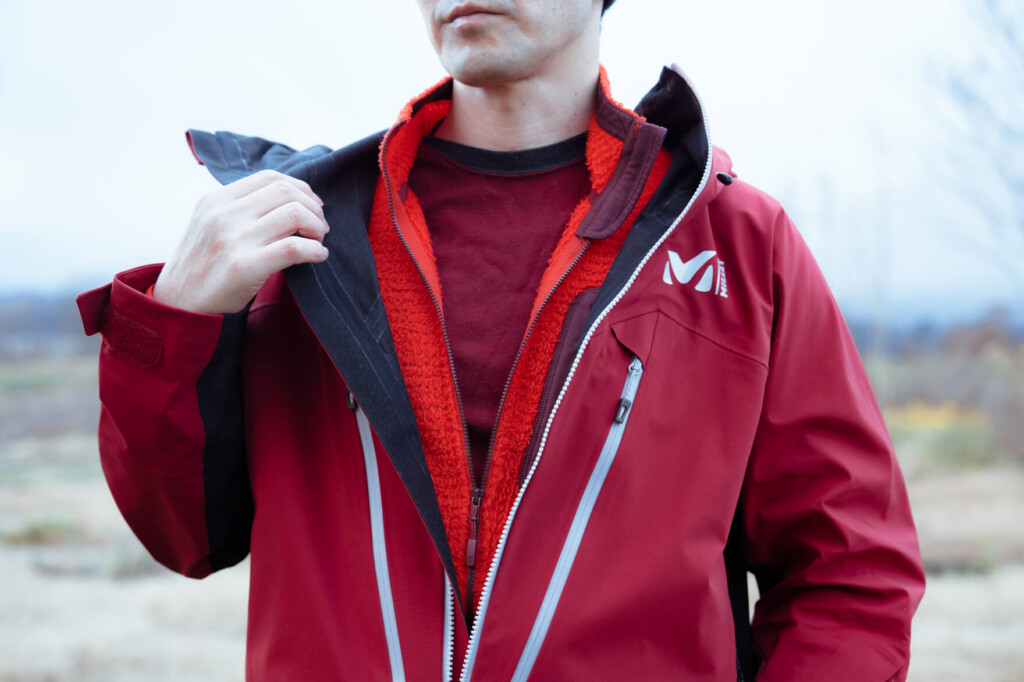
Strictly speaking, some clothing can perform multiple roles in one piece, and depending on the season and situation, such as running in the middle of summer without wind, it may not be necessary to layer all layers, so it is a smart layering to understand these functions and roles and adjust them according to the scene.
Here we summarize the basic roles of each layer.
| Layer | Base layer | Middle layer | Shell Layer |
|---|---|---|---|
| image |  |  |  |
| Main role |
|
|
|
| Main wear |
|
|
|
Base layer as the most important layer that is always essential
No matter what the case, a base layer is literally a "base" and is an indispensable layer in all seasons and activities . Although you may act on just one base layer, it is unlikely that you will be able to act on only the shell layer on your skin. This important base layer is now available in a wide variety of models from a wide range of manufacturers, so you may often be unsure what to choose. From here, we will explain five checkpoints to help you choose the perfect outfit for you from this diverse base layer.
Point 1: Materials - Learn the difference between synthetic fiber and merino wool
One of the most important points when choosing a base layer is to choose the material, which is what kind of fabric it is made of.
First of all, the basic premise is to avoid using cotton for outdoor base layers that will lose its heat retention when wet. Instead, three types of synthetic fibers (synthetic fibers) are made from polyester, nylon, and polypropylene, which are materials that are quick-drying without losing heat retention even when wet, merino wool, which is a wool that is produced in Australia and New Zealand, and blended materials of these wool and synthetic fibers (in detail, there are many different synthetic fibers, and there are many other natural fibers such as silk and cashmere, and recycled fibers such as Tencel, but for now, as long as you know the two major types of these synthetic fibers and wool, there is no problem).
Below is a summary of the rough characteristics of each. Each one is not suitable for use, so the secret to making your stay comfortable is to wear it according to the season and activities rather than the same material being the best year-round.
Point 2: Thickness of the fabric - Choose according to season and activity
Each model of the base layer often comes in a lineup of different thicknesses even though it is the same style, and manufacturers try to adapt to a variety of seasons and activities by changing the thickness of the fabric. By the way, the unit of thickness of the fabric is generally expressed in terms of grams (g/m2) per square meter of the fabric, as the thicker it is generally expressed in terms of the amount of grams (g/m2).
Thin (lightweight)
It is made for summer and sweating activities, and although it does not have much heat retention, it is light and breathable and quick-drying thick. It is not impossible to use this thin layer to make it useful all year round by layering another base layer. The thickness is roughly around 100 to 170 g/m2.
Medium-thick (midweight)
It is the most versatile thickness that can be used all year round, focusing on spring and autumn activities. If you're looking for your first outfit, we recommend this thickness. The thickness is roughly around 160 to 250 g/m2.
Thick (heavy weight)
It has sufficient heat retention to accommodate the harsh cold of winter. However, moisture management is not a priority, so moisture wicking is not a great option. It provides the perfect comfort in winter, but it's too hot in warmer seasons to wear. As a guideline for thickness, it is approximately 250 g/m2 or more.
Personally, as long as you don't do winter mountain climbing during the harsh winter, you don't have to hurry up with thick base layers because they're not easy to use. First, it is best to prepare the thickness of the midway and lightweight.
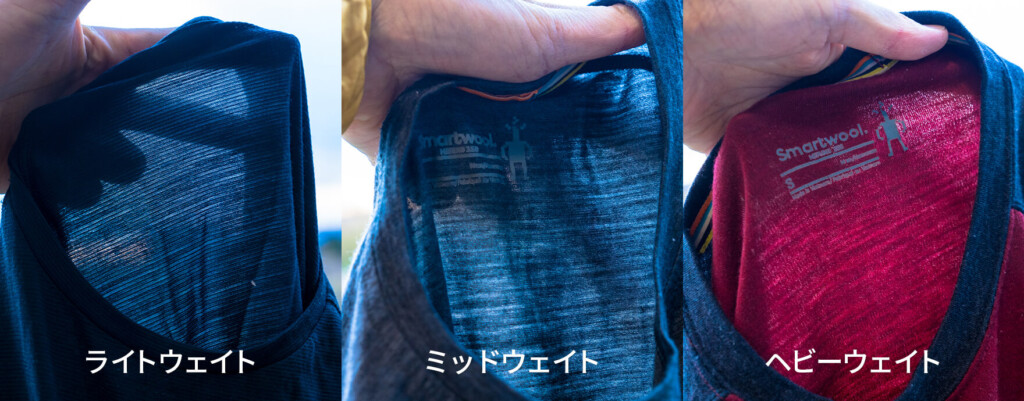
Point 3: Shape, knitting, sewing - Choose a design that suits your purpose and make it even more comfortable
There are four main types of styles (shapes) for the base layer. Each one has its best suited seasons and activities, so we've summarized the advantages and disadvantages of each one below, so please choose a style that fits you better, taking into account the details listed here.
Personally, I don't use short-sleeved zip necks or hoodie types as they are limited in season and activities. Therefore, if you don't have any particular preferences, we recommend the long sleeve type for outdoor activities such as mountain climbing and hiking. In terms of functionality, the zip neck type is easy to adjust the temperature and is convenient, but if you want to use it as an inner layer for everyday wear, the crew neck type is easier to use, which is a concern.
Focus on models with a unique twist in knitting and sewing methods 1: Whole garment
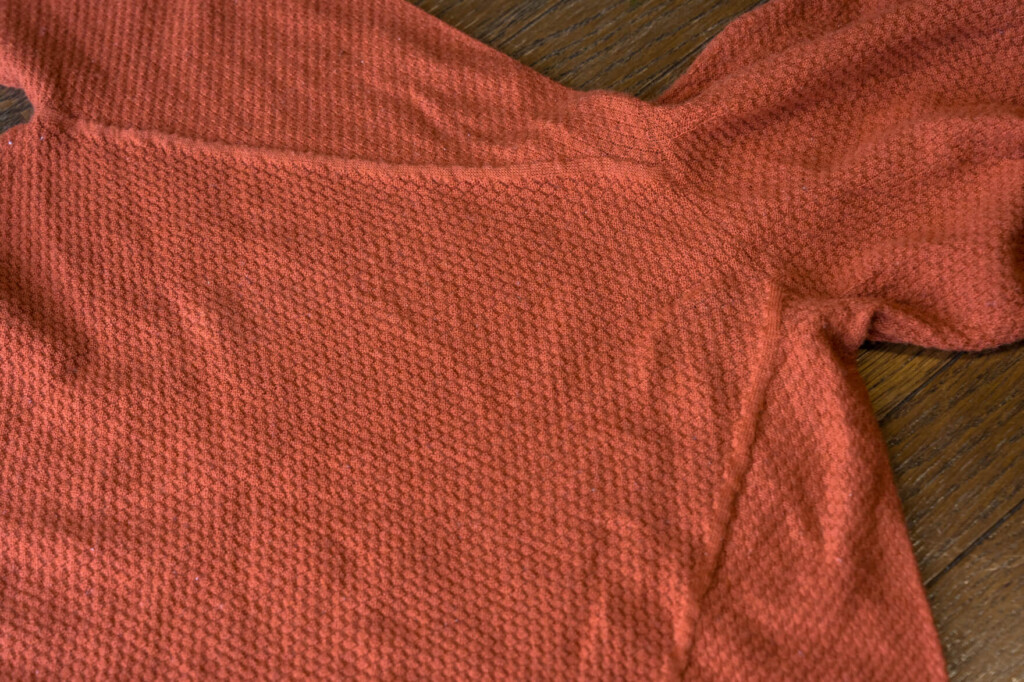
Sewn-free knitwear knitted entirely in three dimensions. Despite its complex knitting that incorporates different functions in place, such as breathability, texture, and elasticity, it can be knitted seamlessly without stitching at all. It is light, warm and breathable, and does not slurp seams, making it an amazing fit and fit.
Focus on models with a unique twist in knitting and sewing 2: Three-dimensional knitting

As I mentioned in Whole Garment, by knitting the three-dimensional structure that creates a passage for air between the skin surface, which is typical of waffle fabric, the fabric can be used to maintain more dead air and provide moderate ventilation.
Point 4: Comfort and fit - The basic silhouette is tightly attached to the skin
There may be slight differences in the silhouette (fit) of the base layer, but it is common to wear a slim fit that fits perfectly along the body lines.
There are two main reasons for this. One is that it is necessary to adhere the fabric to the skin in order to absorb sweat that has been developed during the course of action, peel off moisture from the skin, and make it easier to evaporate efficiently. The other reason is that it is designed to be layered, so it is difficult to layer with a loose, doweled silhouette.
On the other hand, models with a slightly looser silhouette are thought to have an original purpose, such as whether they are intended to be comfortable when relaxed, casually designed to be easy to wear in everyday life, or whether they are designed to be a summer T-shirt type that emphasizes breathability, or can be used as base layers or middle layers. In any case, there is no one correct answer for these fits, but consider comparing the model's aims with the features you are looking for.
This silhouette can be imagined to some extent from the displays such as "Standard Fit," "Slim Fit," and "Trim Fit," which are listed on the manufacturer's website, but in the end, it is certain that you try on and decide based on your individual sense of whether it fits your body type.
Point 5: Other detailed functions and features - Keep the functions found in higher quality and high-performance models -
UV protection
A common type of base layer that has UV protection effect is added to the fabric. This literally means sunscreen, but is it necessary even when you're wearing clothes? You may think so. In fact, outdoor activities where people are active in areas with strong reflections such as high altitudes or snow, can be affected by UV rays even over clothes. For this reason, if you just don't want to get sunburned, it is especially effective to choose a model with this feature.
Antibacterial and odor-resistant
The problem of odor has always been inevitable for base layers, especially synthetic fiber models. This is because when you are a typical mountain climber, you will have to sweat a lot and keep it on for days, and synthetic fibers will inevitably remain in the fabric even if sweat residues or odorous substances are selected in the fibers.
However, recently, the evolution of technology has made it possible to see a way to save some degree from odor problems.
One is to wear a base layer containing "wool". Wool has a strong, natural deodorizing function, and even if you sweat, the unpleasant smell will almost disappear once it dries, making it relatively comfortable to wear no matter how many days you wear it. Some people say that it doesn't smell even after wearing it for a week, so in that sense, wool has the most unparalleled characteristics of a mountain climbing base layer.
The other is to choose a model that is synthetic, if not as good as wool, and has a deodorizing function. For example, "antibacterial and deodorizing clothing" that has been achieved by using silver ions* kneaded into the fabric (Montbell) and polysine deodorizing processing using natural antibacterial substances are becoming the mainstream. Conversely, it may be important to remember that for synthetic fiber models that do not have such functions, you need to be careful about odor issues.
*In recent years, in Europe and the United States have been moving towards avoiding metal-derived raw materials such as silver salts, which are used for deodorizing functions, in Europe and the United States, and new environmentally friendly technologies are also being updated in this field.
Flat seams that do not stick to the skin
The base layer, which is intended to adhere to the skin, can cause rubbing if the seams on the lining are raised, causing it to interfere with the shoulder harness of the backpack, causing discomfort and rubbing. It is important to know whether or not you are properly dealing with such abrasion care, but it is important.
It is more comfortable to choose a model that has detailed responses, such as a flat-lock seam with flat seams to avoid rubbing, or a cutting pattern to prevent seams from coming into the top of the shoulder where the shoulder harness hits.
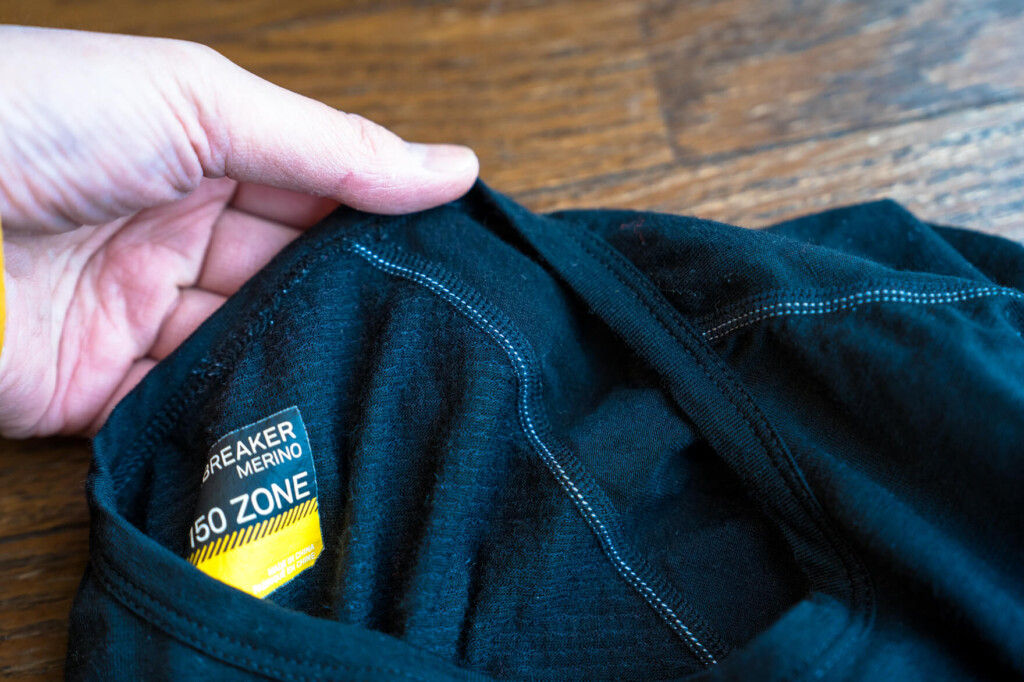
Be careful about whether wool will shrink due to washing.
Finally, I would like to share with those who buy wool base layers with something that is easy to forget. Since ancient times, wool clothing has been "shrinking when washed normally in the washing machine." That remains essentially the same today. The surface of wool is a scale-like layer called a "scale", which when wet, opens, and when washed, the scales intertwined and shrinks.
However, recent high-performance wool has been treated with excellent shrink-proofing during the spinning process, and these products are allowed to be washed in a regular washing machine. Of course, I don't think these will shrink at all 100%, but at least within my own experience, it will not lead to a catastrophe where you will no longer be able to wear it after washing (even if it doesn't go far, it seems to have been clearly shrinking).
For this reason, it's easy to imagine that all of the most recent mountain merino wool base layers can be washed somehow, but that's not the case in reality. It is not uncommon for products that show top-level performance to be able to shrink easily and require careful care such as hand washing.
If possible, it is definitely a great help as products that are easy to care for can be washed with other clothing without worrying about anything. Therefore, when choosing a base layer of merino wool, check to see if there are any precautions to make it easier to shrink, and if possible, choose a model that can be washed normally, which will make it easier to care for. On the other hand, if there is a possibility that it will shrink when washed, make sure to wash it using the manufacturer's designated care method.
Summary: Assuming you use it according to the situation
The base layer is important clothing that adheres to the skin. It is important to choose functionality and heat retention that suits the season and activities. We would appreciate it if you could use this review and tips for choosing a base layer that has a variety of roles and appeal, and help you find the perfect photo for each of us. Of course, no matter how sturdy the base layer is, don't forget to pay attention to other middle layers and shell layers. So have a fun mountain trip!


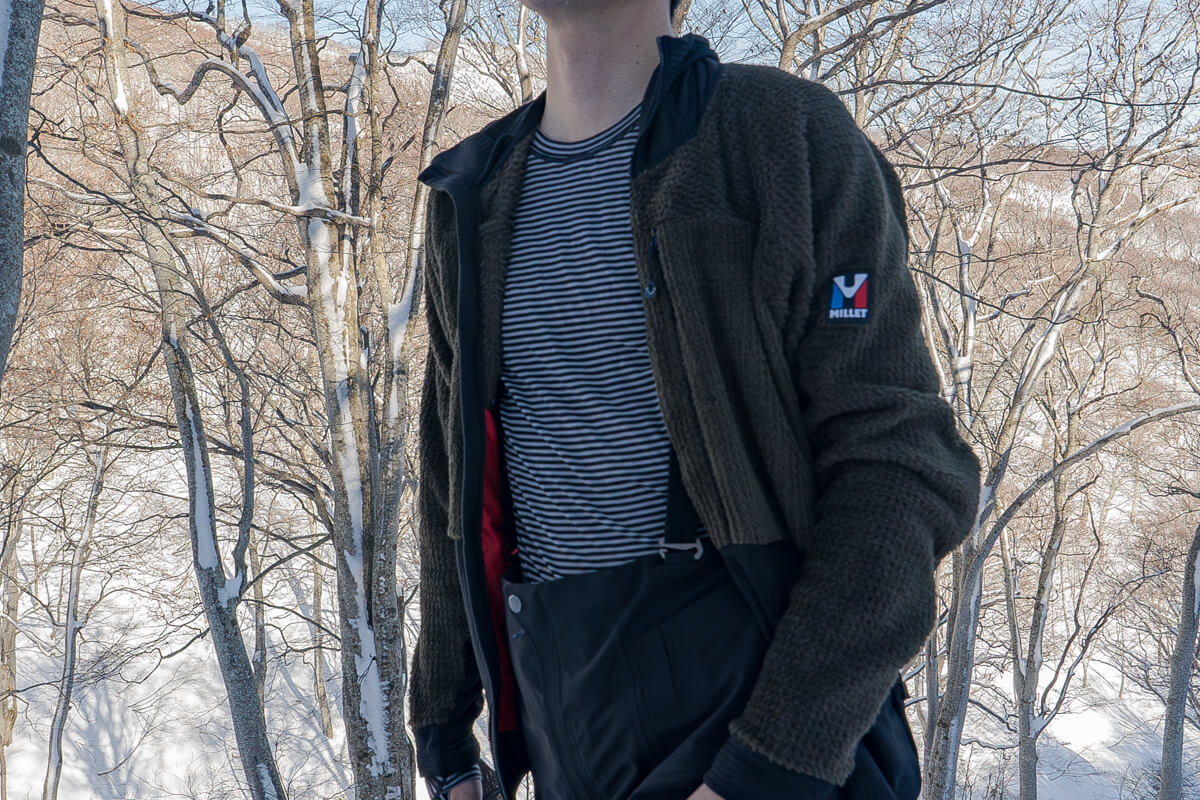



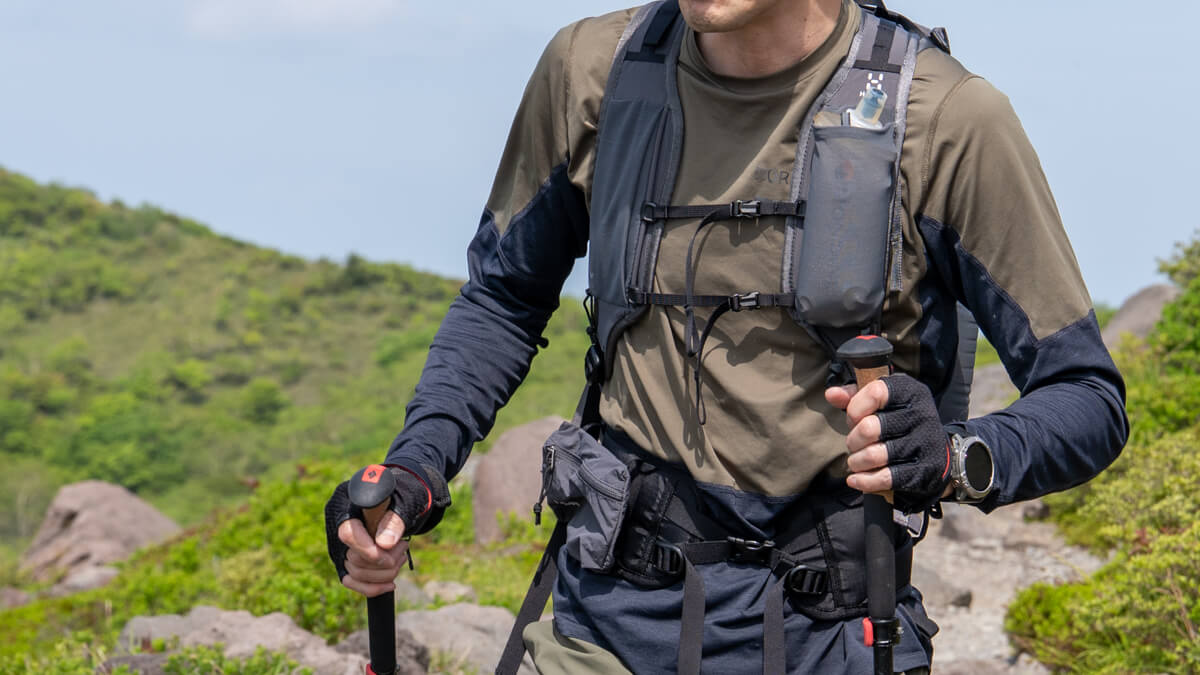

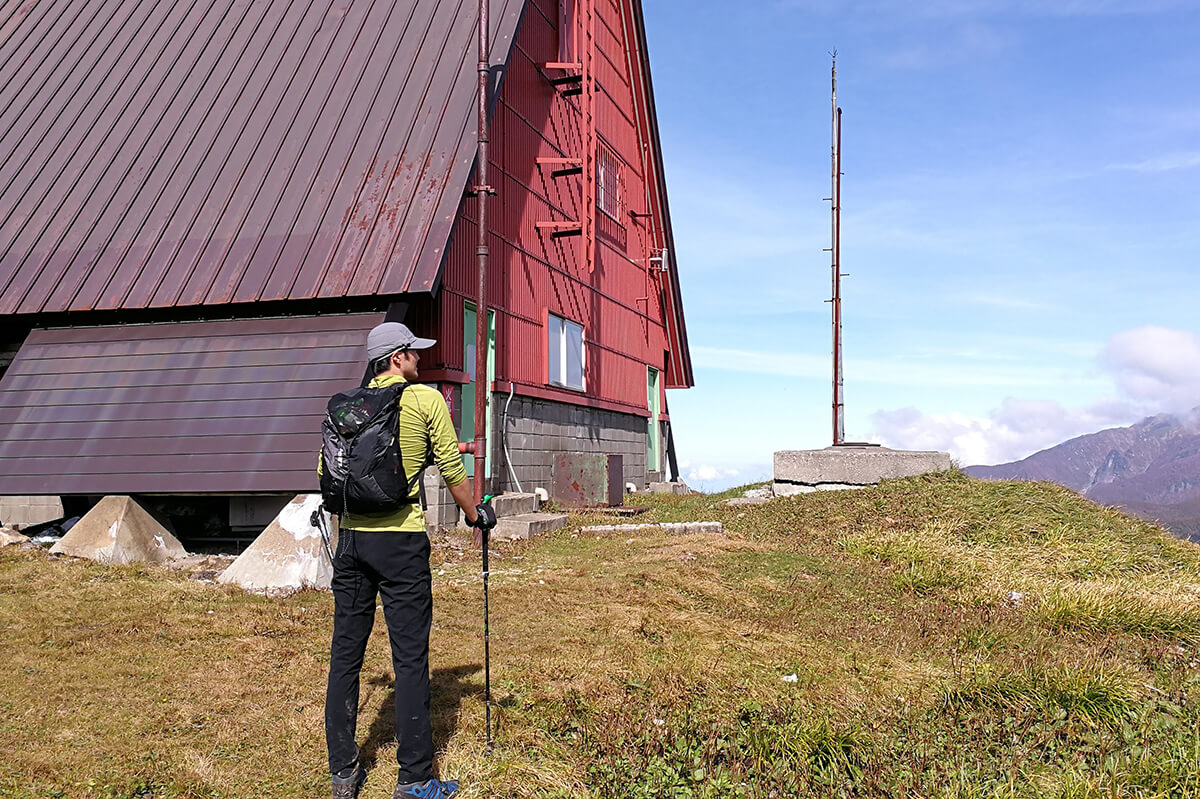





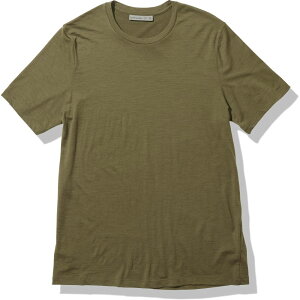
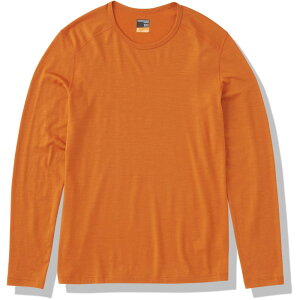


 [Fall/Winter 2025] We've selected the best synthetic insulation for fall/winter outdoor activities from approximately 200 models, and here are some tips on how to choose the right one.
[Fall/Winter 2025] We've selected the best synthetic insulation for fall/winter outdoor activities from approximately 200 models, and here are some tips on how to choose the right one. [Fall/Winter 2025] Down? Synthetic? Fleece? The key to comfortable layering is choosing the right material. The best mid-layers for mountaineering (cold weather gear) by type, and tips for choosing the right one.
[Fall/Winter 2025] Down? Synthetic? Fleece? The key to comfortable layering is choosing the right material. The best mid-layers for mountaineering (cold weather gear) by type, and tips for choosing the right one.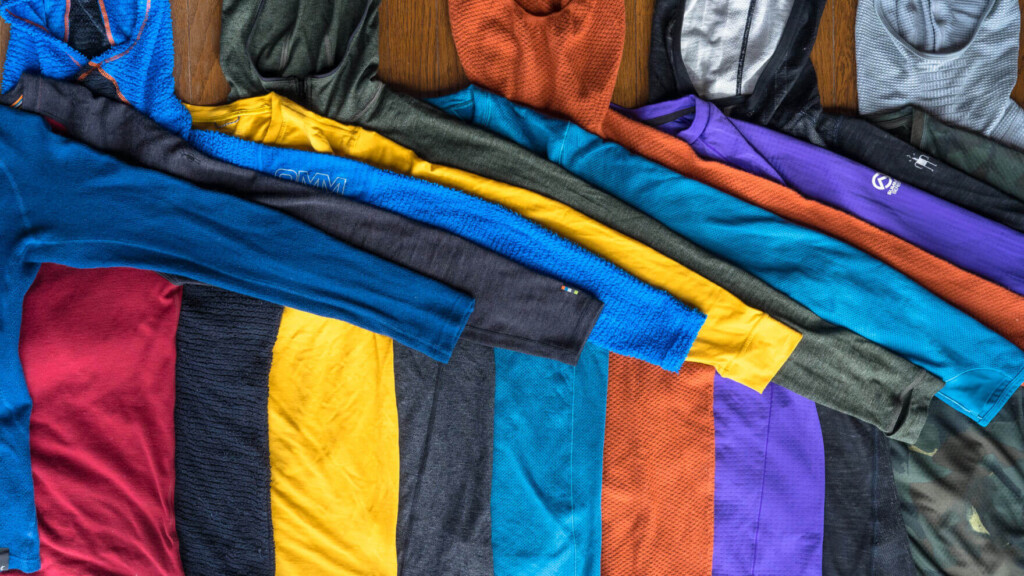 [A self-paying review without consideration] A selection of 40 or more base layers, and by actual comparison of the best buys by scene and purpose.
[A self-paying review without consideration] A selection of 40 or more base layers, and by actual comparison of the best buys by scene and purpose.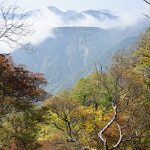 Comparison review: We compared the base layer (underwear) of merino wool that you're interested in
Comparison review: We compared the base layer (underwear) of merino wool that you're interested in